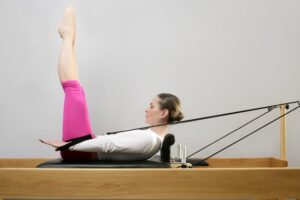There is an understanding that lack of movement can be correlated with muscle stiffness and tension and with that comes the feeling of being inflexible and lacking freedom of movement. But how exactly does muscle stiffness impact our flexibility? Muscles attach to bones, bones interact at joints and it’s at our joints where movement occurs. Each muscle in our body has a point of origin and a point of insertion, connecting to our bones via tendons. The origin is located on one bone and the insertion on another bone, with the muscle crossing over the point where the 2 bones join. It is the contracting and lengthening of the muscle fibres which creates movement in the joint.
The way our joints move is a result of how all the muscles surrounding the joint interact with one another. Any given joint in the body has multiple muscles acting on it; if muscles are stiff and tight then the movement at the joint is affected, generally restricting range of movement. Loss of movement at one joint will often start to impact range of movement at other joints.
When we consider repetitive movement patterns and how it impacts our body, the lower body provides a great example of how lack of use or repetitive use at one joint impacts the engagement of the muscles.
Sitting for extended periods of time is a common contributor to lower limb muscle stiffness. Although the hip flexors are not actively being used whilst sitting, by placing the hip joint into the 90o position the hip flexors are passively engaged, whilst the hip extensors are passively lengthened. The muscles around the knee are also being affected, with the muscles through the front of the knee being passively lengthened and the muscles through the back of the knee being passively engaged.
It’s reasonable to think that if the hip extensors (our hamstrings) are lengthened in a seated position then that would surely help us bend forward and be able to touch our toes in standing because the muscles have been stretched. Unfortunately, that’s not the case, partly because the hamstrings have their origin on the pelvis and insert onto the lower leg bone, running behind the knee. Meaning that in a seated position the distance between the 2 ends of the muscle is shortened.
Cycling provides a great example of how repetitive active use of the lower body also creates muscle stiffness. The forward position of the body whilst riding creates a flexion bias movement through the hip joint, minimising the range of hip extension which, along with the constant bending of the knee results in the hamstrings being repetitively contracted within a restricted range. When the muscles are constantly worked within a restricted range the compounding muscle stiffness increases the risk of injury due to the inability of the muscle to lengthen.
Pilates focuses on fundamental movement patterning to encourage maximum range of movement at the joint by using exercises to intentionally work the muscles through their full capacity; contracting and lengthening, moving and stabilizing, creating balance through the joint and maximizing our movement capacity, to whatever degree that may be.
From simple fundamental movement patterning to increasing the complexity of movements by incorporating more moving parts, Pilates has a multitude of benefits to add to everyone’s weekly movement goals.
- (07) 4638 3777 (QLD) or 1300 383 777 (NSW)
- [email protected]



